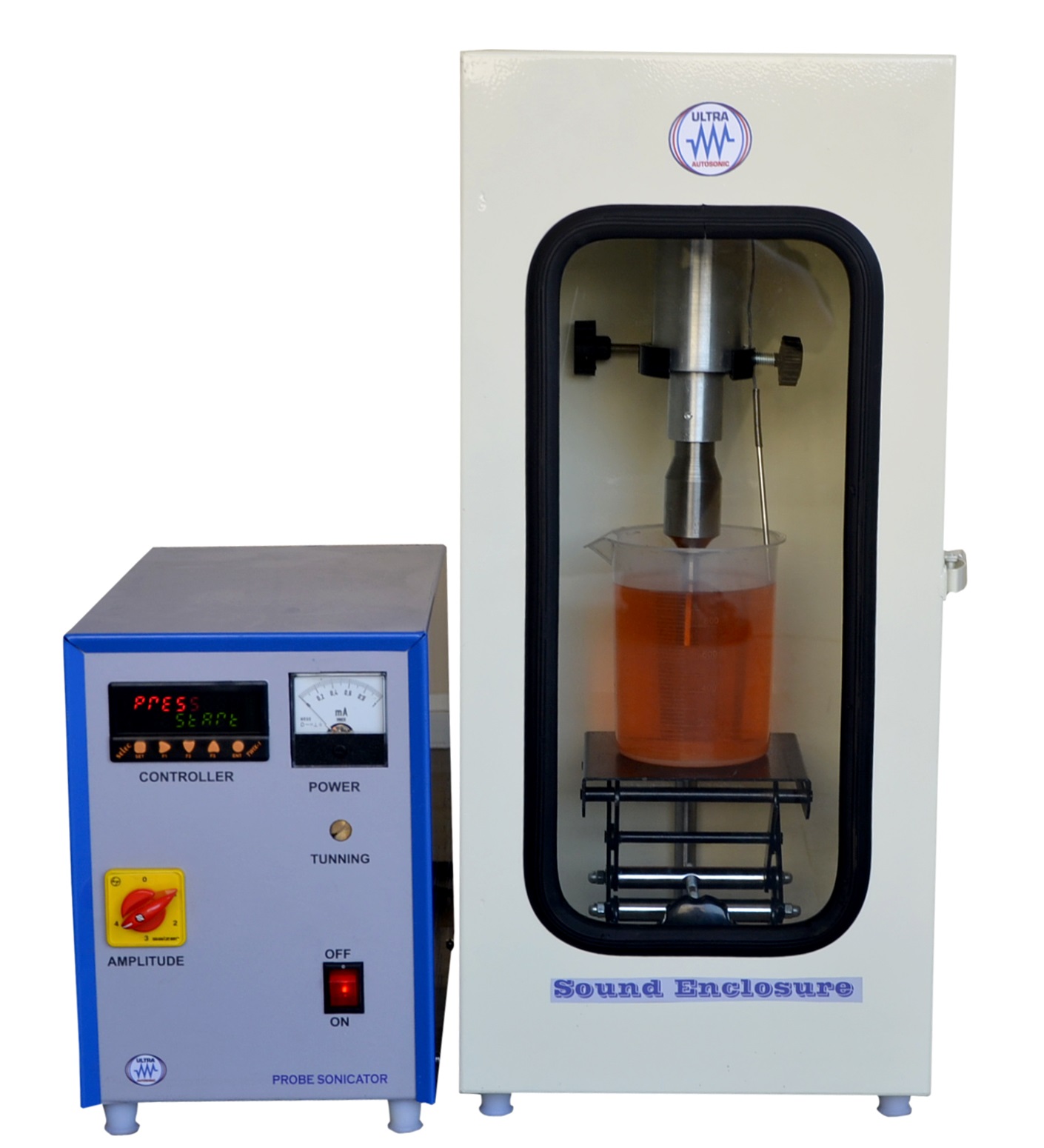Application of Probe Sonicator: Environmental : A Sonicator can help to treat sediment and soil samples efficiently in an environmental testing lab, with a sonification of eight to ten minutes per sample. This protocol is more convenient and easier than the traditional sox let extraction process, which involves repeatedly wash solids into a flask using glassware and solvents for four to eighteen hours. Biological : DNA, RNA, protein and cellular components can be extracted through breaking up bacteria, tissue cells and yeast by a Sonicator. The high- strength ultrasound waves can expand and contract the liquid around the sample and produce bursting bubbles, which help to pull adjacent molecules away from each other and create sheering forces to tear apart the bimolecular. Cleaning : ASonicator can be used to clean a variety of substances. The focused ultrasound generated by the Sonicator unit is about 10 times stronger than a normal ultrasonic bath. a large number of powerful bubbles generated during sonification can scrub many types of substance efficiently and quickly. As a result, a Sonicator can remove dirt from inner and outer surfaces of the target materials, clear residual solder from PC pads, remove grease strip from wire dies and so on. Industrial : A Sonicator can be used to decrease the particle size of a material, speed up reactions, extract compounds, and produce emulsions in industry. For example, sonification can help to disperse inks and dyes in painting industry; it can also help to produce dense castings in ceramics industry. Chemical : A Sonicator helps to speed up chemical reactions, allowing researchers to synthesize catalysts and prepare new alloys. When used in the hydrolysis of esters or microencapsulate proteins, sonification process gives the benefits of low energy, high yields and efficiency. for more info Please visit our Web:www.ultraautosonicindia.com, www.ultraauosonic.co.in
Chat with us on WhatsApp
×
This is your website preview.
Currently it only shows your basic business info. Start adding relevant business details such as description, images and products or services to gain your customers attention by using Boost 360 android app / iOS App / web portal.

2022-03-01T06:39:18
Application of Probe Sonicator: Environmental : A Sonicator can help to treat sediment and soil samples efficiently in an environmental testing lab, with a sonification of eight to ten minutes per sample. This protocol is more convenient and easier than the traditional sox let extraction process, which involves repeatedly wash solids into a flask using glassware and solvents for four to eighteen hours. Biological : DNA, RNA, protein and cellular components can be extracted through breaking up bacteria, tissue cells and yeast by a Sonicator. The high- strength ultrasound waves can expand and contract the liquid around the sample and produce bursting bubbles, which help to pull adjacent molecules away from each other and create sheering forces to tear apart the bimolecular. Cleaning : ASonicator can be used to clean a variety of substances. The focused ultrasound generated by the Sonicator unit is about 10 times stronger than a normal ultrasonic bath. a large number of powerful bubbles generated during sonification can scrub many types of substance efficiently and quickly. As a result, a Sonicator can remove dirt from inner and outer surfaces of the target materials, clear residual solder from PC pads, remove grease strip from wire dies and so on. Industrial : A Sonicator can be used to decrease the particle size of a material, speed up reactions, extract compounds, and produce emulsions in industry. For example, sonification can help to disperse inks and dyes in painting industry; it can also help to produce dense castings in ceramics industry. Chemical : A Sonicator helps to speed up chemical reactions, allowing researchers to synthesize catalysts and prepare new alloys. When used in the hydrolysis of esters or microencapsulate proteins, sonification process gives the benefits of low energy, high yields and efficiency. for more info Please visit our Web:www.ultraautosonicindia.com, www.ultraauosonic.co.in
2022-03-01T06:39:18
Keywords
- RNA
- Web
- DNA
- inks
- dyes
- dirt
- info
- flask
- inner
- yeast
- solids
- result
- esters
- liquid
- PC pads
- example
- variety
- bacteria
- sediment
- solvents
- benefits
- protocol
- Cleaning
- glassware
- wire dies
- compounds
- catalysts
- emulsions
- new alloys
- substances
- low energy
- Biological
- Industrial
- ASonicator
- many types
- efficiency
- hydrolysis
- researchers
- Application
- bimolecular
- A Sonicator
- high yields
- grease strip
- soil samples
- tissue cells
- large number
- ultraauosonic
- particle size
- Sonicator unit
- dense castings
- outer surfaces
- sheering forces
- Probe Sonicator
- traditional sox
- target materials
- powerful bubbles
- bursting bubbles
- ceramics industry
- painting industry
- focused ultrasound
- extraction process
- chemical reactions
- adjacent molecules
- cellular components
- ultraautosonicindia
- sonification process
- eight to ten minutes
- clear residual solder
- normal ultrasonic bath
- four to eighteen hours
- microencapsulate proteins
- environmental testing lab
- high- strength ultrasound waves

Submit Your Enquiry